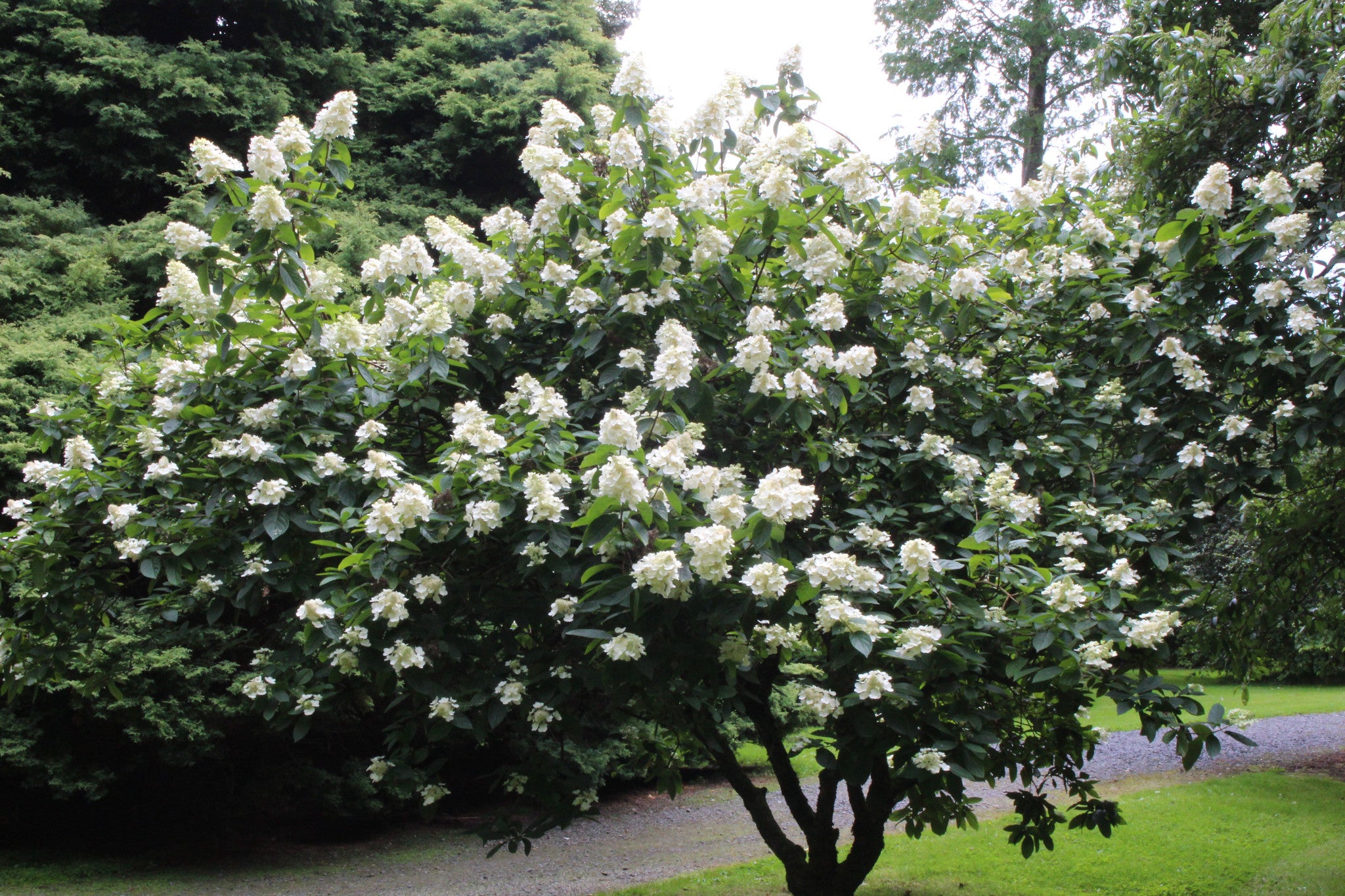Hydrangea paniculata 'Grandiflora'
Approx. 0.5 litre pot
About this cultivar:
Hydrangea paniculata 'Grandiflora' is a big, arching shrub with large panicles of white florets fading to pink as they mature. You'll have to wait ten years until it is the size of the plant in the photo!
- Position: Full sun, partial shade
- Soil: Almost any soil, grows well in Ballyrobert
- Flowers: June, July, August
- Other features: Grows well in Ballyrobert
- Hardiness: Fully hardy - grows well in Ballyrobert!
- Habit: Clump forming, bushy
- Foliage: Deciduous
- Height: 120 - 180 cm (4 - 6 ft)
- Spread: 120 - 180 cm (4 - 6 ft)
- Time to full growth: 5 to 10 years
- Plant type: Herbaceous Perennial, shrub
- Colour: Green, white
- Goes well with: -
About this genus:
Hydrangea (hy-dran-je-a) get its name from the Greek hydor, water, and aggeion, a vessel, or vase, in reference to the shape of the seed capsule. It is a classic garden plant. The genus Hydrangea contains about 75 species of shrubs, trees and woody vines, along with hundreds of named cultivars. Hydrangeas are grown primarily for their large flower clusters that vary in shape from flat lacecaps, to long panicles, and large, round mopheads.
At Ballyrobert we only really grow cultivars from the species paniculata (pointed panciles of flowers) and arborescen (mopheads of flowers). You may read lots of different things about pruning paniculata cultivars. We find the best thing to do is shear them back hard to about three feet from ground level in March (spring) each year. For the mop-headed Hydrangea arborescen cultivars we cut them back further to ground level each March. Strange, as the name (arborescen means 'tree like') would imply you leave them alone.....
Hydrangeas grow best in sun or partial shade and are not too fussy regarding soil (as long as it isn't extreme). We typically grow them in mixed borders, and in our garden at Ballyrobert we have them almost everywhere!


